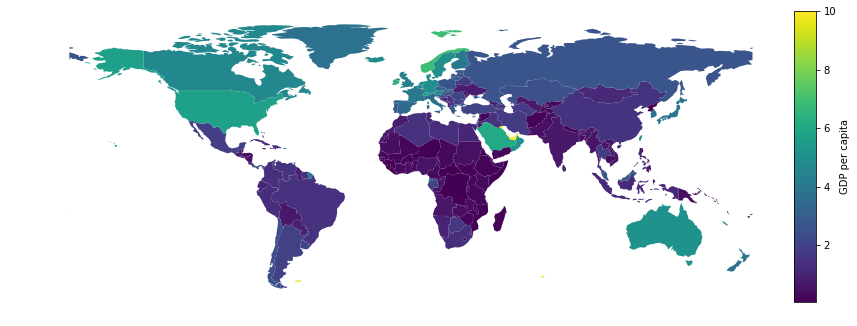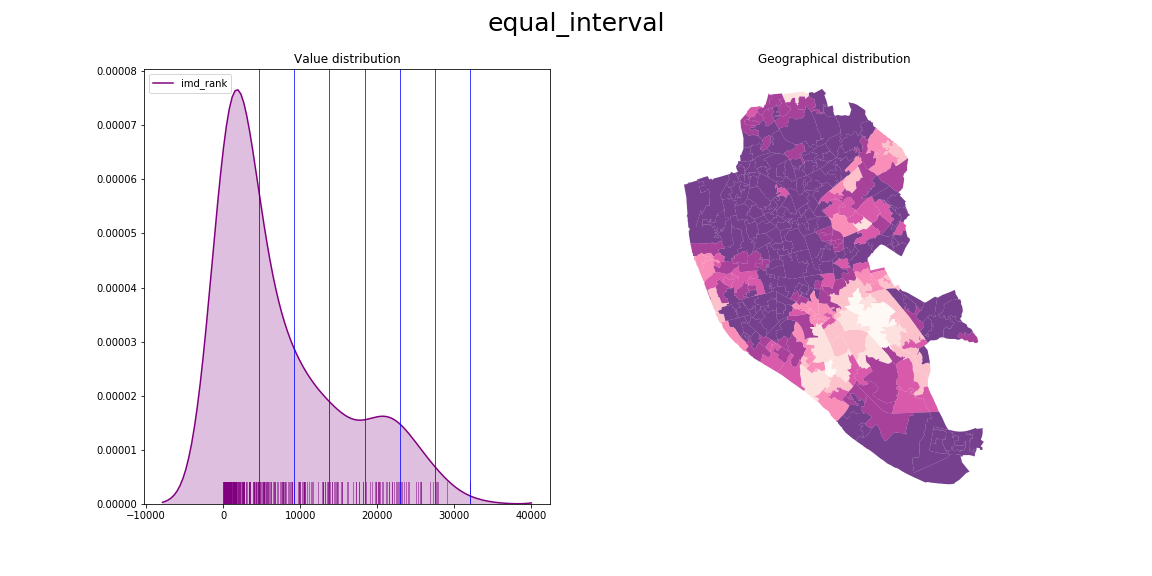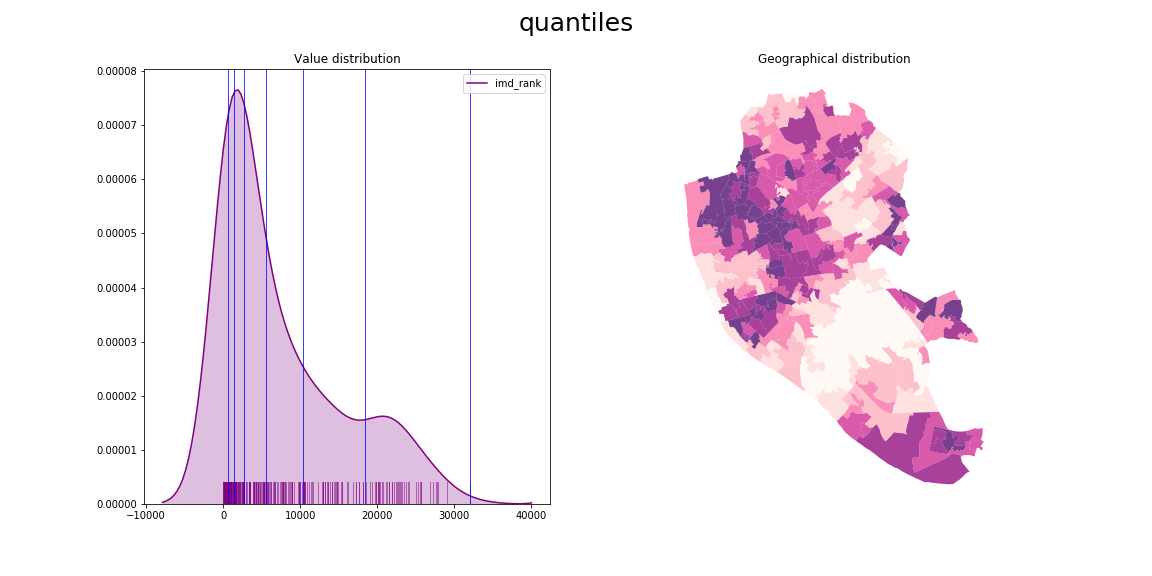Choropleths: Mapping data over space
Working with Geospatial Data in Python

Dani Arribas-Bel
Geographic Data Science Lab (University of Liverpool)
Choropleths
countries.plot(column='gdp_per_cap', legend=True)

Choropleths
Specifying a column:
locations.plot(column='variable')
Choropleth with classification scheme:
locations.plot(column='variable', scheme='quantiles', k=7, cmap='viridis')
Key choices:
- Number of classes (
k) - Classification algorithm (
scheme) - Color palette (
cmap)
Number of classes ("k")
locations.plot(column='variable', scheme='Quantiles', k=7, cmap='viridis')
Choropleths necessarily imply information loss (but that's OK)
Tension between:
- Maintaining detail and granularity from original values (higher
k) - Abstracting information so it is easier to process and interpret (lower
k)
Rule of thumb: 3 to 12 classes or "bins"
Classiffication algorithms ("scheme")
locations.plot(column='variable', scheme='quantiles', k=7, cmap='viridis')
How do we allocate every value in our
variableinto one of thekgroups?
Two (common) approaches for continuous variables:
- Equal Intervals (
'equal_interval') - Quantiles (
'quantiles')
Equal Intervals
locations.plot(column='variable', scheme='equal_interval', k=7, cmap='Purples')

Quantiles
locations.plot(column='variable', scheme='quantiles', k=7, cmap='Purples')

Color
Categories, non-ordered
locations.plot(column='variable',
categorical=True, cmap='Purples')
Graduated, sequential
locations.plot(column='variable',
k=5, cmap='RdPu')
Graduated, divergent
locations.plot(column='variable',
k=5, cmap='RdYlGn')



IMPORTANT: Align with your purpose
Let's practice!
Working with Geospatial Data in Python

